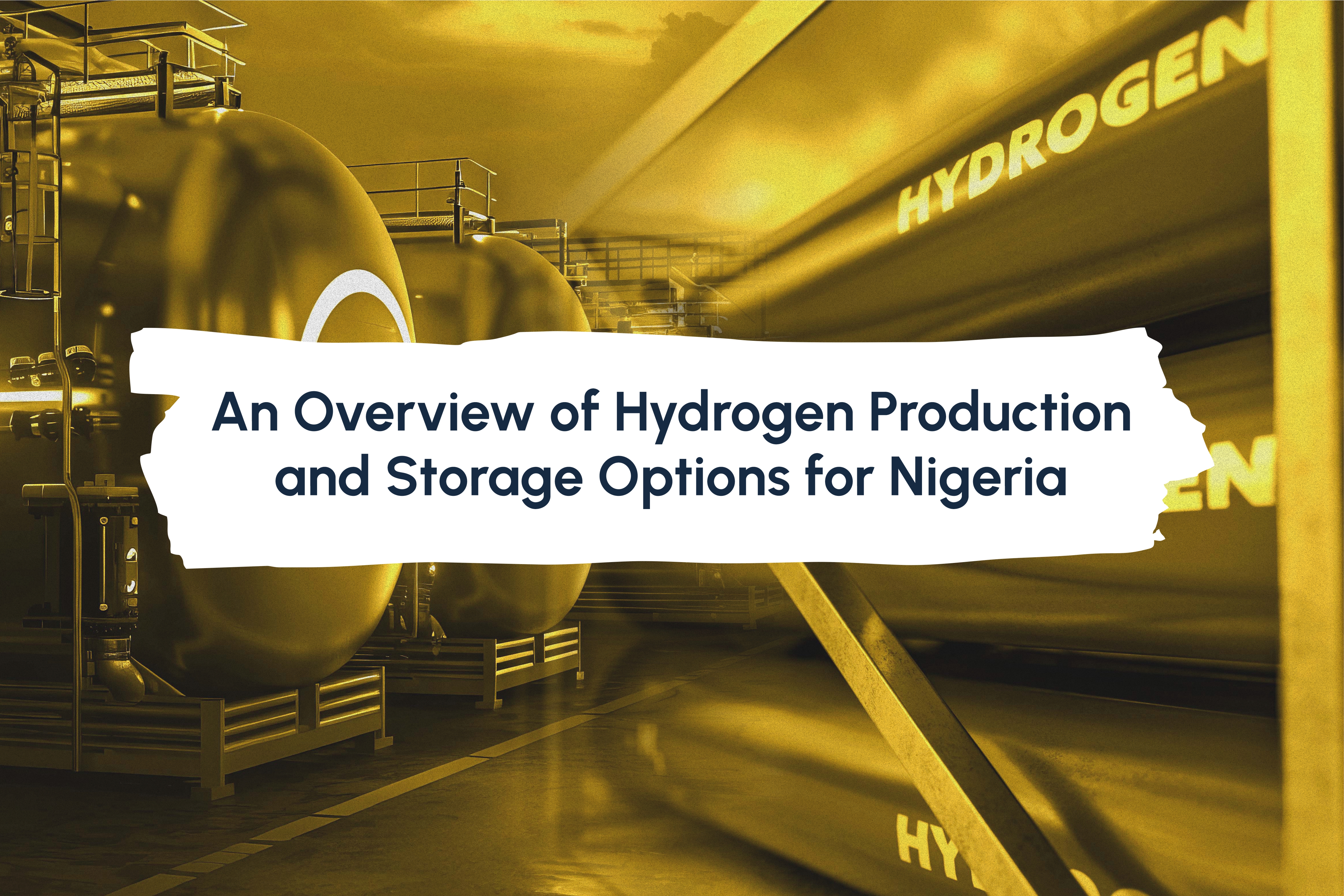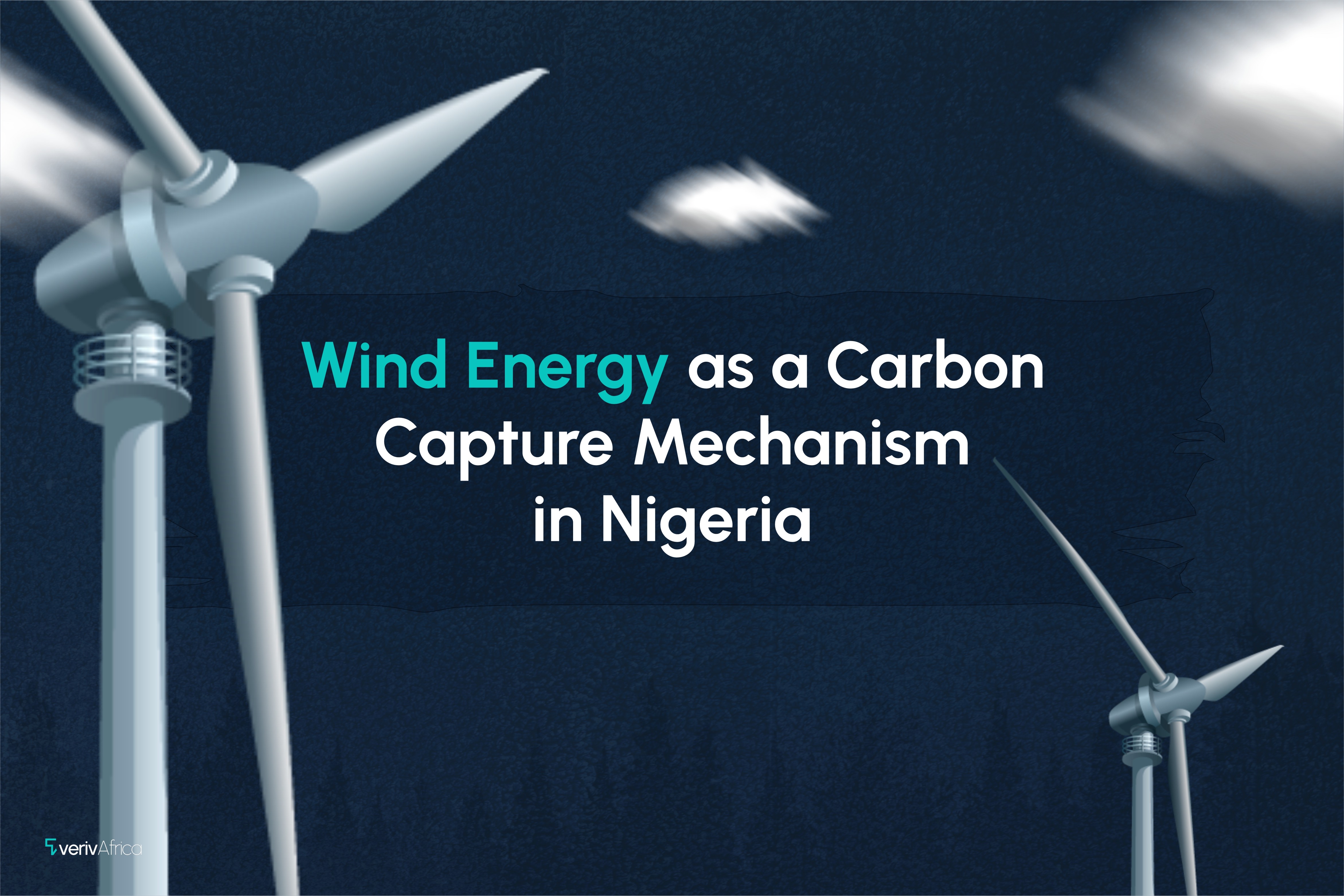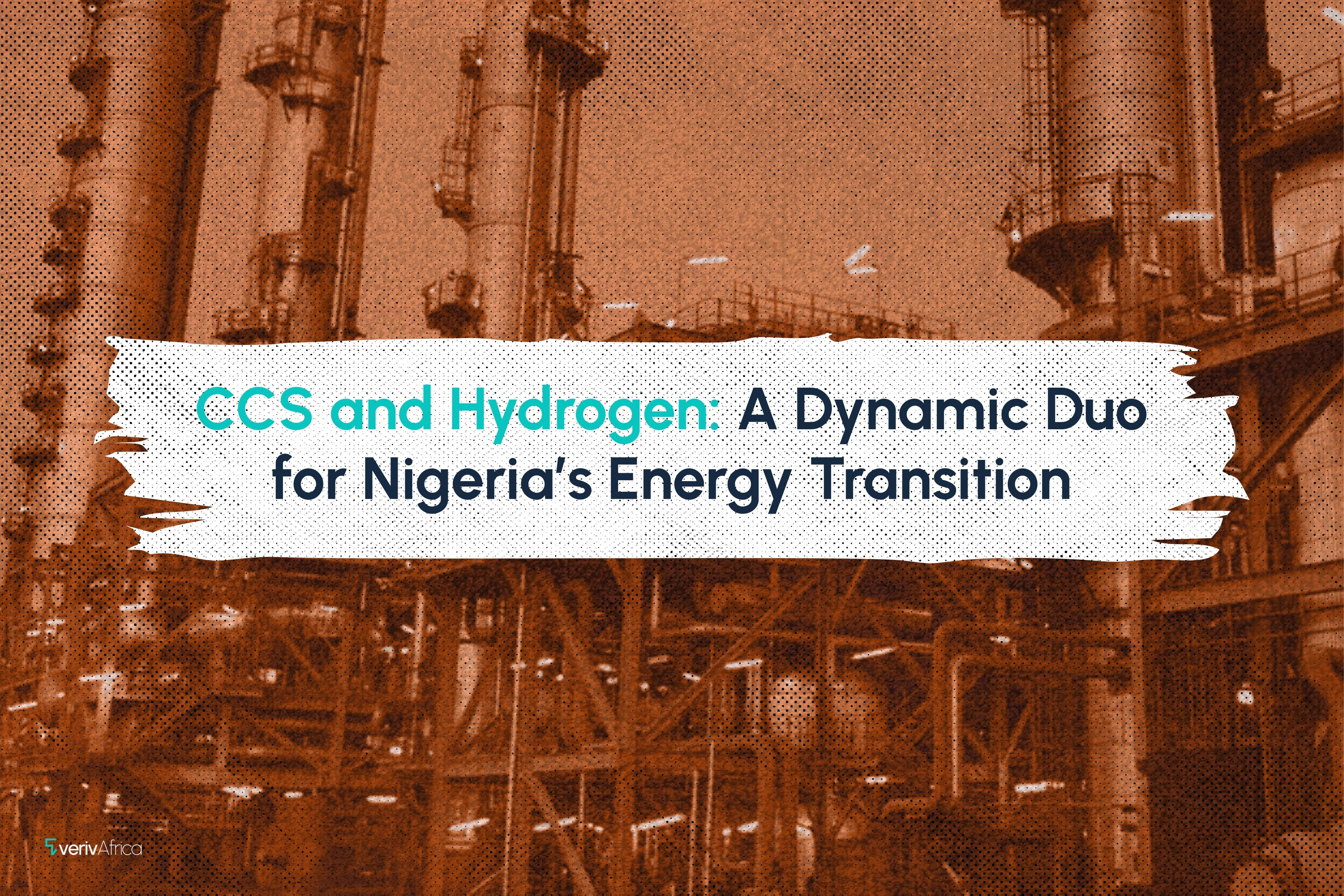An Overview of Hydrogen Production and Storage Options for Nigeria

Nigeria boasts an abundance of solar energy, biomass, hydroelectric power, and, most notably, fossil fuel energy reserves. These energy sources could be utilised to produce and store hydrogen directly or indirectly.
Hydrogen is a versatile and abundant fuel option that can effectively decrease greenhouse gas emissions. In the insight, CCS and Hydrogen: A Dynamic Duo for Nigeria’s Energy Transition, we showed how hydrogen is considered the future fuel. The Energy Transition Commission and the Market Research Report 2024 forecast significant growth in the hydrogen market, projecting an increase from $290 billion to $525 billion by 2030 (Fig. 1)
About 614 metric tonnes of hydrogen are expected to be produced in the next two to three decades around the globe. Nigeria could leverage this growth to be a part of the global hydrogen market with an excellent value chain framework. According to a recent report by the International Energy Agency, there is a projected increase in worldwide electricity demand to approximately 4% in 2024, which represents one of the most significant increases in the last twenty years (Fig. 2). There is a need to bridge the deficit in electrical energy supply, especially now that fossil fuel production is predicted to decline soon. This insight clarifies the application of hydrogen in multiple industries, technologies that could generate hydrogen from various sources, and numerous storage options, enabling the reduction of greenhouse gas emissions (GHG). It intends to encourage joint petroleum and hydrogen investments to lower carbon emissions and decrease energy poverty.
Figure 2: Global Demand for Electricity, 1991–2025

Application/Uses
Hydrogen is expected to play a significant role in net zero emissions by 2050, when fossil fuel consumption will decline dramatically, and 90% of the electricity generated will come from clean energy sources. As an energy carrier, hydrogen seamlessly integrates with various other renewable energy options. This ability allows it to function as a medium for storing and transporting other renewable energy sources like solar, geothermal, and biomass.
Hydrogen releases water after combustion, unlike hydrocarbons. It is present on earth in water and most organic compounds. Despite its abundance in nature, it is rarely found in a free state due to its light and volatile nature. Hydrogen can be applied in various industrial and manufacturing industries, including transport, ammonia, fertiliser, methanol, and steel production. It can also be used for oil refining, food processing, hydrogen fuel cells, electricity generation, district heating, cooling, and transport when processed into fuel cells. Earlier, we mentioned that hydrogen can store excess energy from solar, wind, geothermal, biomass, and other sources. Solar energy, for example, is known to be in excess during the hot-dry season; hence, it can be converted and stored in hydrogen fuel cells during peak periods and used in low-peak periods or seasons.
Hydrogen Production Technologies
Nigeria has yet to discover any natural hydrogen reserves. However, unlike hydrocarbons, hydrogen production can take various forms. Hydrogen is labeled with different colour codes to differentiate each production process. A vast majority of these technologies are under research and development. Figure 3 depicts the different hydrogen production processes according to the colour spectrum and the benefits of each colour. The analysis shows that hydrogen derived from fossil fuels requires carbon capture, utilisation, and storage (CCUS) to be completely clean.
Figure 3: Hydrogen Colour Spectrum shows the production technologies and their benefits

The most common production technologies are steam methane reformation (SMR), electrolysis, and gasification. More than 60% of global hydrogen production comes from SMR. SMR involves adding steam to methane gas, a major component of natural gas. This leads to the formation of carbon monoxide and three hydrogen molecules. Water is then added to convert the carbon monoxide into carbon dioxide and hydrogen. From the stoichiometry of CH4, it is calculated that with 2000 kg of methane, you can get 1005 kg of hydrogen. The process typically contains high levels of carbon intensity, which must be captured and permanently sequestered. Hydrogen produced through this process is called grey hydrogen (when there is no CCS), and blue hydrogen, if the CO2 emitted, is captured, utilised, and stored.
Gasification is the process of splitting carbon-rich feedstocks using gasifiers. The most common parent feedstocks are coal and biomass. These feedstocks are exposed to a controlled amount of air under high temperature and pressure conditions, which breaks them down into molecules of carbon monoxide and other compounds. The carbon monoxide produced goes through a water-gas shift process to produce hydrogen. This also leaves traces of CO2 that must be sequestered. Hydrogen produced using this method is called brown hydrogen.
Electrolysis, however, is splitting water molecules into hydrogen and oxygen using renewable energy. These energy sources include solar, geothermal, wind, nuclear, etc. Hydrogen produced through this process is called green energy. It is further classified according to the type of renewable energy used. These forms of hydrogen are named pink, purple, and red hydrogen. Figure 4 shows that hydrogen produced through this process has less carbon emission intensity, but the average cost per kg of hydrogen is slightly high compared to brown and white hydrogen.
These production technologies are widely used across the globe. The chart in Figure 5 reveals the total number of hydrogen projects that use SMR, coal gasification, and other forms of electrolysis across Australia, the United States of America, Great Britain, India, and China. These countries use these technologies to produce hydrogen and ammonia, among others. Note that we did not take into consideration other electrolysing technologies like the use of alkaline electrolysers (AE), proton exchange membranes (PEM), and solid-oxide electrolyser cells (SOEC).
Other hydrogen production processes, as seen here, include partial oxidation, pyrolysis, auto-thermal reforming, photolysis, fermentation, and thermolysis. For this insight, we will focus on SMR, gasification, electrolysis, and a little on naturally occurring hydrogen.
Naturally Occurring Hydrogen
Natural hydrogen, also called golden, white, or geological hydrogen, has powered the city of Bourke Bougou, Mali for almost a decade. It recently got the world’s attention due to the high production cost of other hydrogen forms. This discovery made explorationists and energy enthusiasts consider exploring other fields. Natural hydrogen has been overlooked due to misconceptions about its rarity, despite documented occurrences in countries like Germany in the early 20th century.
White hydrogen is both carbon-free and cost-effective. Unlike green hydrogen, it does not require water and avoids the CCS cost associated with blue hydrogen. It is projected to have a lower cost of production at 0.5 and 1.0 dollars per kg, as seen in Figure 4, and a low emission intensity of just 0.3 kg of CO2 per kg of hydrogen. This makes it the most in-demand hydrogen of all.
Hydrogen Storage Options
Hydrogen storage is the second part of the midstream value chain in the hydrogen economy, with great market value. Storage capital expenditure (CAPEX) ranges from $120 per kg to $550 per kg, depending on the storage technology used. Midstream distribution and storage play a crucial role in facilitating the development of hydrogen and fuel cell technologies. Its volatility and highly inflammable nature require it to be transported and stored cautiously. Hydrogen storage is also necessary when there is a surplus in hydrogen production, and excess renewable energy is stored in it; hence, it can be stored either in gaseous, liquid, or solid form for future use.
Hydrogen has the most outstanding energy-to-mass ratio of all fuels. However, its energy per unit volume is low due to its low density at normal temperatures. As a result, better transport and storage techniques are necessary to achieve higher energy density.
To transport and store hydrogen, we have to convert it to a dense fluid through compression or liquefaction. Liquefaction requires a lot of energy because hydrogen must be cooled at cryogenic temperatures (-253C/-423F). These liquefied gases are usually stored in insulated tanks to avoid phase change and gas escape. On the other hand, compression requires high-pressure tanks of about 350-700 psi. The process transforms hydrogen into a dense, transportable gas. Hydrogen can also be stored by adsorption (on a material surface) or absorption (inside a material body with sorption ability). Material-based storage can be in adsorbents, liquid organic materials such as BN-methyl cyclopentane, hydrides, and chemical hydrogen.
Hydrogen can also be temporarily stored geologically. This technique is capital-intensive and must be done on a large scale. The lower cost of production is a decisive factor in implementing this form of storage. Geological options for storage include porous rocks such as salt caverns, depleted oil and gas reservoirs, aquifers, etc.
Nigeria can use hydrogen to store energy from renewable sources, such as solar energy. The transportation sector and ammonia production can also benefit from hydrogen. Although hydrogen technologies are widely used, they are still undergoing research and development. The market is still evolving, and like other renewable energy options, production and storage costs are high. However, we could explore many funding options to help reduce costs at both smaller and larger scales, as well as the exploration of potential natural hydrogen sites. These can support Nigeria in building a solid hydrogen economy and achieving its net-zero goals.
Glossary of Terms
CCUS: carbon, capture, utilisation, and storage.
GHG: greenhouse gas.
KGCO2e: Kilogrammes of carbon dioxide equivalent.
NG: natural gas.
SMR: steam methane reformation.
References
Ball, P. J., & Czado, K. (2022, March 1). Natural hydrogen: the new frontier. Geoscientist- the Magazine of the Geological Society of London. https://geoscientist.online/sections/unearthed/natural-hydrogen-the-new-frontier/
Hydrogen Production and Infrastructure Projects Database - Data product - IEA. (n.d.). IEA. https://www.iea.org/data-and-statistics/data-product/hydrogen-production-and-infrastructure-projects-database
Abubakar, Sakinat, Veriv Africa Insight. CCS AND HYDROGEN: A Dynamic Duo for Nigeria’s Energy Transition (2024, April 15 ). https://www.verivafrica.com/insights/ccs-and-hydrogen-a-dynamic-duo-for-nigerias-energy-transition
24/7 Carbon-Free Energy: Methods, Impact & Benefits. (n.d.). https://gocarbonfree247.com/hydrogen-color-wheel/
Similar Insights
View All
Scoping Nigeria's Revenue Losses from Crude Oil Theft

Building a Carbon Credit Industry in Nigeria

Wind Energy as A Carbon Capture Mechanism in Nigeria

CCS AND HYDROGEN: A Dynamic Duo for Nigeria’s Energy Transition

Navigating Nigeria's Oil Sector Transformation: Strategies for the NNPCL's Profitability and Growth

We Have a Crude Oil Theft Problem

Geothermal Energy’s Potentials in Nigeria's Renewable Energy Portfolio

War against Oil Theft: Conventional Security versus Private Surveillance Contractors
Don't miss out!
Our subscribers receive firsthand updates on our recent content. We hope you become one, too.
It's free, so why not?

